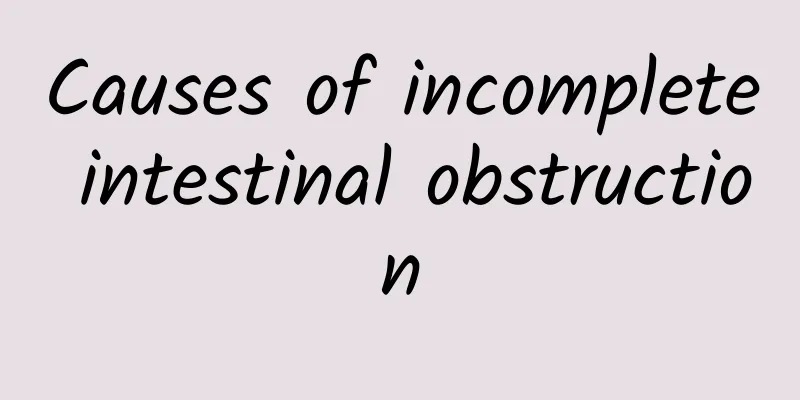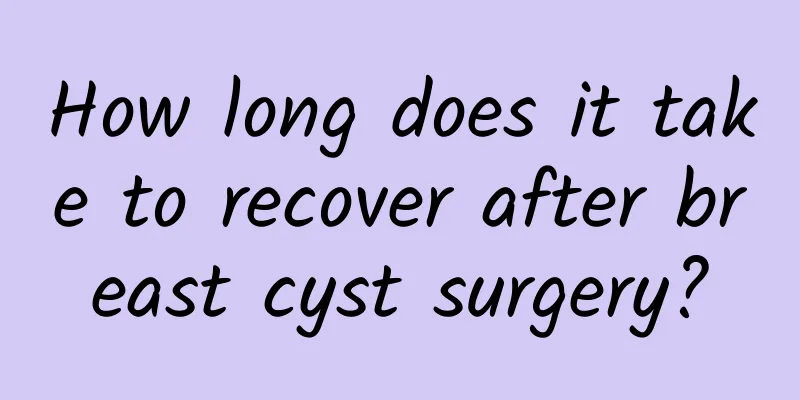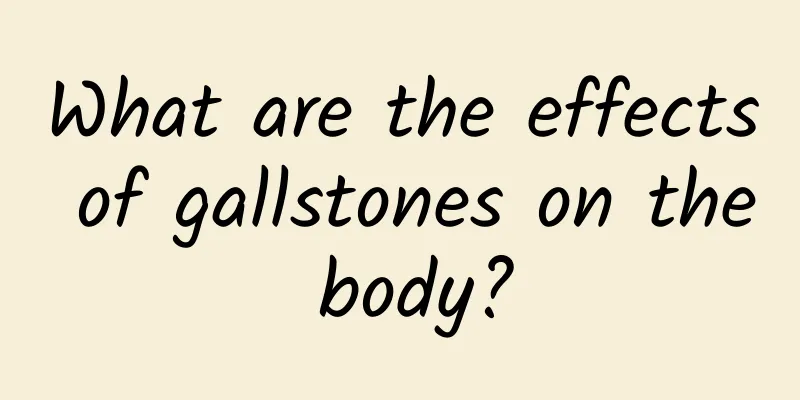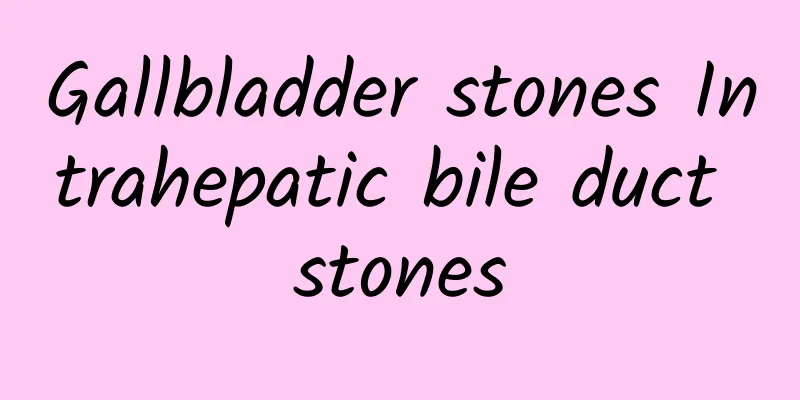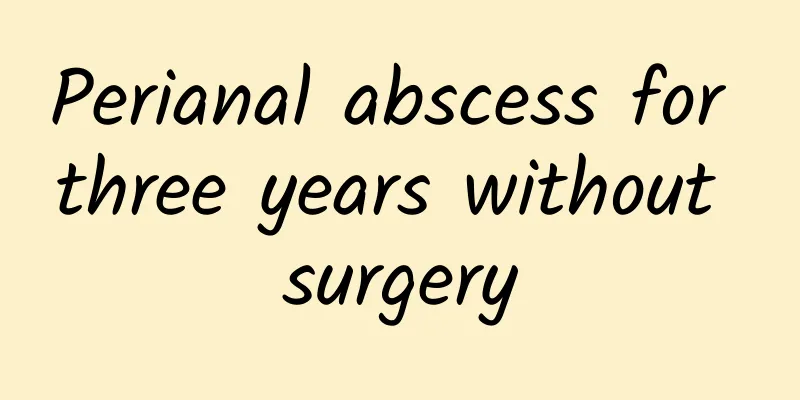What are the symptoms and treatment of gallstones?
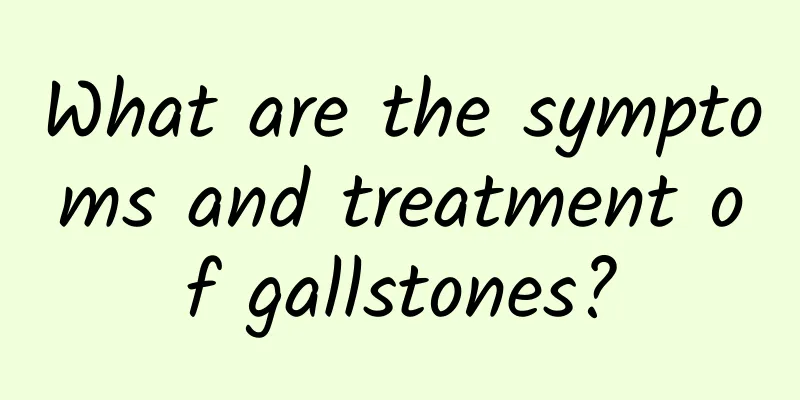
|
What are the symptoms and treatment of gallstones? Typical symptoms of gallstones include right upper abdominal pain, nausea, vomiting, indigestion, etc. Some patients may experience jaundice or fever. Mild patients usually do not feel any obvious discomfort, while severe cases may cause acute cholecystitis due to bile duct obstruction or infection, and medical attention should be sought as soon as possible. Treatment for gallstones mainly includes drug lithotripsy, minimally invasive surgery, and lifestyle adjustments. 1. What are the symptoms of gallstones? 1. Right upper abdominal pain (biliary colic) The most common symptom of gallstones is severe pain in the right upper abdomen, especially after a high-fat meal. The pain usually lasts from a few minutes to a few hours and may radiate to the back or right shoulder. Pain that comes and goes is typical of irritation of the gallbladder or bile duct. 2. Indigestion and gastrointestinal discomfort Gallstones can interfere with bile secretion, causing indigestion symptoms such as bloating, belching, and intolerance to greasy foods. Patients may feel a heaviness in the abdomen after meals, especially after consuming high-fat or irritating foods. 3. Nausea, vomiting and jaundice When stones get stuck in the bile duct and block the normal flow of bile, the patient may experience nausea and vomiting, and in severe cases, jaundice (yellowing of the skin and whites of the eyes), as well as darker urine and lighter stools. This is an important sign that the biliary system is affected. 4. Fever and infection If gallstones cause a gallbladder infection (acute cholecystitis), you may have a high fever, chills, and severe abdominal pain. This is an acute condition and you need to go to the hospital right away. 2. Treatment of gallstones 1. Drug dissolution For patients with mild symptoms or those who are not suitable for surgery, medical lithotripsy can be tried. For example, oral ursodeoxycholic acid (UDCA) or chenodeoxycholic acid can slowly dissolve small cholesterol stones, but the treatment course is long (usually 6 months to 2 years) and the effect is poor for large stones or pigment stones. 2. Minimally invasive surgery (1) Laparoscopic cholecystectomy: This is the current standard treatment for gallstones and is suitable for patients with recurrent biliary colic or cholecystitis. The surgery removes the gallbladder through a tiny incision, which is minimally invasive and has a quick recovery. (2) Endoscopic retrograde cholangiopancreatography (ERCP): Suitable for patients with bile duct stones. The doctor directly removes the stones through an endoscope to avoid bile duct obstruction. (3) Gallbladder-preserving lithotomy: This surgery can be chosen for patients who wish to preserve gallbladder function, but the risk of stone recurrence after surgery is high. 3. Lifestyle Adjustment (1) Dietary improvement: Reduce the intake of high-fat and high-cholesterol foods, eat more fiber-rich foods (such as vegetables, fruits, and whole grains), and avoid overeating. (2) Appropriate exercise: Regular exercise can improve metabolism, reduce the risk of cholesterol crystal formation, and help prevent the recurrence of gallstones. 3. Tips Although gallstones are common, they can cause serious complications such as gallbladder perforation or acute pancreatitis if not treated promptly. See a doctor as soon as symptoms appear. Regular follow-up is also recommended for patients who are diagnosed but asymptomatic to understand changes in the stones. At the same time, develop a healthy lifestyle to reduce the risk of stone formation. If you have undergone surgery, you need to pay more attention to dietary structure adjustments and regular check-ups after surgery to ensure a healthy recovery process. The foundation of a healthy life lies in early detection and early treatment. In the face of gallstones, scientific management and timely treatment can effectively prevent the disease from worsening and safeguard your health. |
>>: What to do if the hypersensitive CRP is too high
Recommend
How to take care of ankylosing spondylitis
Ankylosing spondylitis is a very harmful disease ...
Is ankylosing spondylitis hereditary?
Ankylosing spondylitis is a very common clinical ...
How to prevent tenosynovitis
The tendon sheath is a sheath-like structure that...
What are the differential diagnoses for gallstones?
Differential diagnosis of gallstones is key to ac...
Can 3 types of breast nodules disappear with massage?
Massage of breast nodules usually cannot complete...
What is bone hyperplasia?
Bone hyperplasia is caused by the degeneration an...
Can benign adrenal tumors become malignant?
Benign adrenal tumors usually do not turn into ma...
Is it normal to have left sciatica during pregnancy?
Left sciatica is a common phenomenon during pregn...
The Difference Between a Wrist Sprain and a Fracture
The essence of a wrist sprain is a soft tissue tw...
Is breast cyst caused by breast hyperplasia?
Breast cysts may be caused by breast hyperplasia,...
How can I make the bottom tight?
If you're looking for ways to tighten your lo...
Can Gallstones Cause Cancer?
Gallstones themselves do not directly cause cance...
How to get rid of breast cysts
Breast cysts are usually benign lesions that can ...
What are the common causes of spinal deformities?
Spinal deformity is a type of disease in which th...
Will breast hyperplasia turn into cancer?
What is breast hyperplasia? Breast hyperplasia is...

